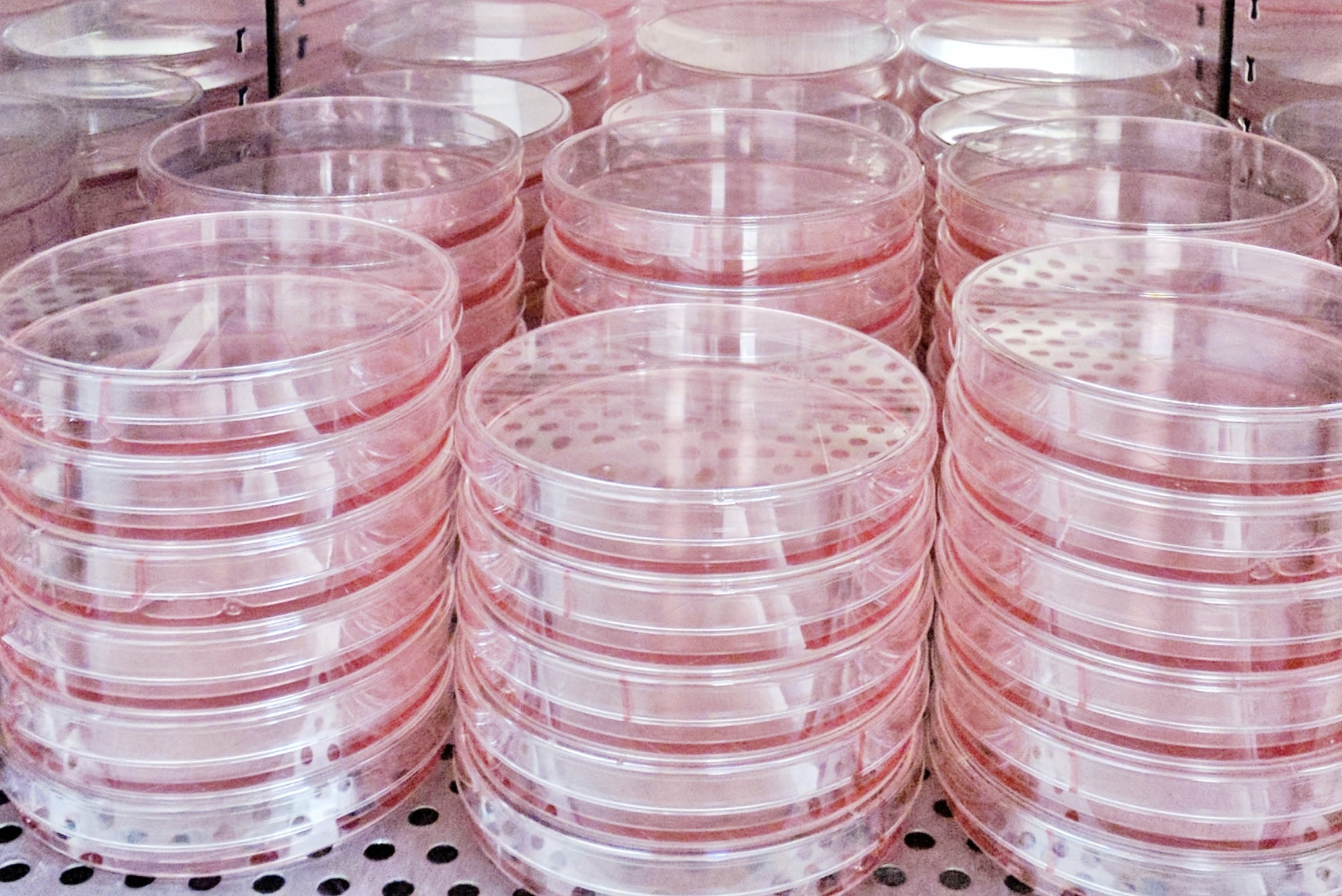
Eva Frederick
March 2, 2021
In the paper, published online March 1 in the journal Cell Metabolism, researchers at Whitehead Institute and the Morgridge Institute for Research performed CRISPR-based genetic screens of cells cultured in either traditional media or a new physiologic medium previously designed in the Sabatini Lab at Whitehead Institute designed to more closely reflect the nutrient composition of human blood. The screen revealed that different genes became essential for survival and reproduction in the various conditions.
“This work underscores the importance of using more human-like, physiologically relevant media for culturing human cancer cell lines,” said Whitehead Institute Member and co-senior author David Sabatini, who is also a professor of biology at the Massachusetts Institute of Technology and an investigator of the Howard Hughes Medical Institute. “The information we can learn from screens in human plasma-like media — or media designed to mimic other fluids throughout the body — may inform new therapeutic methods down the line.”
The widespread use of a human plasma-like medium could open the door for many researchers to conduct experiments in the lab that could have more relevance to human disease, but without complicated methods or prohibitive costs.
“Medium composition is both relatively accessible and quite flexible,” said co-senior author Jason Cantor, an Investigator at the Morgridge Institute for Research and an assistant professor of biochemistry at the University of Wisconsin-Madison, and a former postdoc in Sabatini’s lab. “Not all researchers have access to specialized tissue culture incubators, nor can everyone easily pursue some of the more complex 3D and co-culture methods, but most can get their hands on a bottle of media.”
The big screen
The idea that different environmental conditions may lead to different genes being essential is not a new one. “People have done this in microorganisms, and shown that if you throw [bacteria] into different growth conditions — the contributions of different genes to cell fitness can change,” Cantor said.
With this reasoning in mind — that medium composition could affect which genes become necessary for human cells to grow — the researchers set up screens to identify essential genes in a single leukemia cell line in different kinds of culture media. One batch was grown in a traditional medium, and another cultured in the lab’s new medium called Human Plasma-Like Medium, or HPLM, which has a metabolic composition more reflective of that in human blood.
The approach they used — called a CRISPR screen — takes advantage of CRISPR-Cas9 gene editing technology to systematically snip and knock out genes across the genome, with the goal of creating a population of cells in which every possible gene knockout is represented. The expression of some genes is essential to survival, and cells grow substantially slower or die when those genes are deleted. Other cells may have trouble functioning, and some may grow even faster. Once the pooled cells have had a chance to grow and proliferate, researchers sequence the genetic material of the entire population to determine which genes were critical for survival within the given screen.
Once they completed the initial screens, the researchers identified hundreds of genes that were conditionally essential — that is, necessary for cell growth in one medium versus another. Interestingly, these medium-dependent essential genes collectively had roles in a number of different biological processes.
To determine how much these genes were dependent on the type of cells studied, the researchers then ran similar screens across a panel of human blood cancer cell lines, and then pursued follow-up work to understand why certain genes were identified as conditionally essential.
Ultimately, they uncovered the underlying gene-nutrient interactions, and specifically for these hit genes, traced the effects to availability of certain metabolites — the nutrients and small molecules necessary for metabolism — that are uniquely defined in HPLM versus the traditional media.
The next steps
CRISPR screens can help scientists identify potential drug targets and map out important cellular interactions to inform cancer therapies. “There are so many ways that people use CRISPR screens right now,” said Cantor. “What this study is showing is that the availability metabolites can have a major impact on which genes are important for cell growth, and so I think there are a lot of implications here in terms of how these types of screens could be performed in the future in order to potentially increase the fidelity of what we see in the lab and what might happen in the body.”
The research also establishes more nuanced relationships between cells’ genes and their environment. “What this allows us to do down the line, theoretically, is to tune how important a gene is — how important the encoded protein is — by manipulating metabolite levels in the blood,” said Cantor. “That’s one of our bigger-picture ideas.”
In the future, these relationships could inform cancer treatments. For example, if scientists could “tune” the importance of a specific gene for cancer cell growth, then the protein encoded by that gene could become a more promising drug target — in effect, tricking cancer cells into revealing possible context-dependent vulnerabilities. “The idea of targeting metabolites to treat cancer isn’t itself new — in fact, it [underlies] a well-established anti-cancer therapeutic enzyme still in use today — but I think our work maybe enables us to look for ways to couple this type of approach with other targeted therapies.”
“At our core, we are a basic cell biology lab,” added Nicholas Rossiter, a technician in Cantor’s lab and the first author of the study. “But whenever you’re studying basic cell biology, there’s the potential to translate it into therapeutic strategy. Our plan is just to keep on chugging along in our lab and studying how exactly cell biology can be influenced by these environmental factors. We do the basics, and then there will hopefully be some auspicious findings that can be carried on into therapeutics.”
